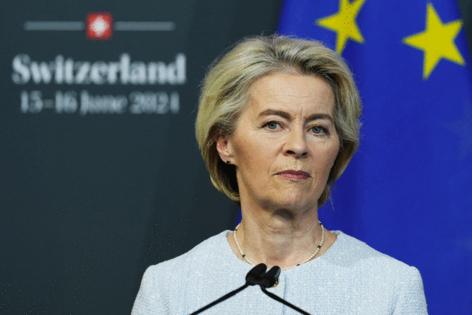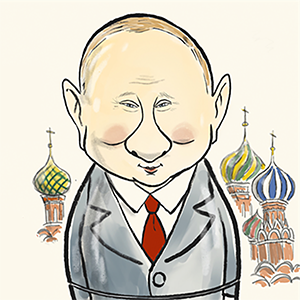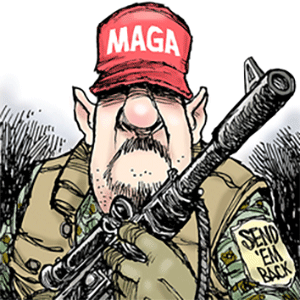Trump extends deadline for 50% tariffs on EU goods to July 9
Published in News & Features
WASHINGTON — President Donald Trump said he would extend the deadline for the European Union to face 50% tariffs until July 9 after a phone call with Commission President Ursula von der Leyen.
“We had a very nice call and I agreed to move it,” Trump told reporters Sunday at Morristown Airport in New Jersey on his way back to Washington.
Von der Leyen, who heads the EU’s executive arm, said earlier Sunday in a post on X that “Europe is ready to advance talks swiftly and decisively,” but “a good deal” will need “time until July 9.” That’s the date that Trump’s 90-day pause of his so-called reciprocal tariffs had been set to end.
The EU had been slated for a 20% tariff under those reciprocal rates announced in April, but a temporary pause took the rate down to 10% through July 9.
But Trump on Friday threatened to impose a higher, 50% tariff on the EU starting June 1 after complaining the bloc was slow-walking negotiations and unfairly targeting U.S. companies with lawsuits and regulations.
The EU has been struggling to understand what Trump is looking for in trade negotiations. Officials have suggested that the EU and U.S. could take their tariffs down to zero on many goods, but Trump has been focused on what he calls non-tariff trade barriers.
Deputy Treasury Secretary Michael Faulkender said on Fox’s Sunday Morning Futures hours earlier that the U.S. faces a “simultaneous challenge” of negotiating with the EU as a bloc on tariffs while also seeking to address most of those non-tariff barriers in talks with individual European nations, creating a “negotiation problem.”
The EU last week shared a revived trade proposal with the U.S. in a bid to boost talks, and the bloc’s trade chief, Maros Sefcovic, held a call with his U.S. counterpart, Jamieson Greer, on Friday.
The new EU framework covers tariff and non-tariff barriers, as well as ways to enhance economic security, mutual investments, strategic purchases and cooperation on global challenges, according to people familiar with the matter who requested anonymity to discuss the terms, which are not public.
Trump’s 50% tariff threat would hit $321 billion worth of U.S.-EU goods trade, lowering US gross domestic product by close to 0.6% and boosting prices by more than 0.3%, according to Bloomberg Economics calculations.
The U.S. president has said that he wants to use tariffs to encourage companies to build plants in the US rather than overseas to manufacture goods. On the same day he announced the 50% EU tariff threat, he also threatened 25% tariffs on smartphones made abroad by companies like Apple Inc. and Samsung Electronics Co.
But on Sunday, Trump said he agrees with recent comments by Treasury Secretary Scott Bessent that the US doesn’t need to bring back textile manufacturing into its borders.
“We’re not looking to make sneakers and T-shirts, and we want to make military equipment,” Trump said, adding he wants to make “big things” in the US, citing chips, computers and AI development.
________
(With assistance from María Paula Mijares Torres.)
©2025 Bloomberg L.P. Visit bloomberg.com. Distributed by Tribune Content Agency, LLC.







Comments